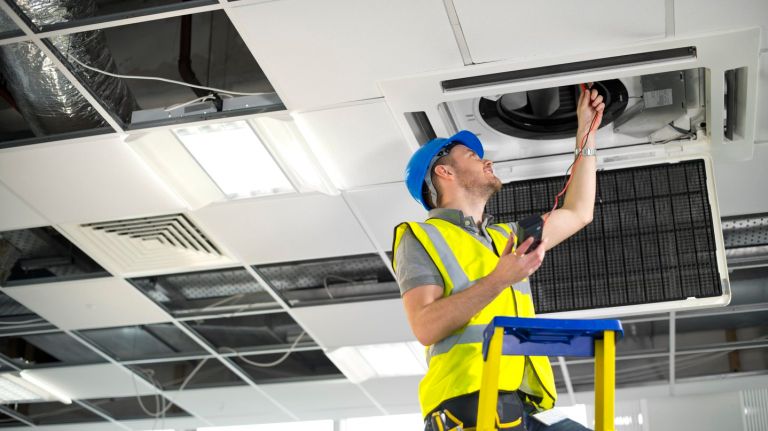
Be careful about wishing for that sick new office space.
Open office layouts and more energy efficient air conditioning systems can accelerate the spread of germs, according to Dr. Robert Amler, of New York Medical College.
The increased risk of contamination in office spaces with few walls is slight, Amler said. And the advantages of having more physical barriers can be irrelevant if enclosed office spaces have a poor quality of air circulating through them, he noted. Some of the more environmentally friendly air conditioning systems have a tight recirculation rate, which Amler said does little to combat the spread of contagions.
“The difference between office walls and open offices is going to be relatively small in terms of risk,” Amler said. “What is much more important is the ventilation of the space and making sure that circulating air is adequately replenished with some fresh outside air.”
Specific setups aside, individual employers and employees can take several steps to stop germs from spreading, according to Amler and Jeff Lessard, senior workplace strategist at Cushman & Wakefield:
Follow prevention protocols
Ensuring all employees get flu vaccines and promoting recommended hygienical practices, such as frequently washing your hands and avoiding touching your face, can keep bugs at bay.
“Our hands are pretty rugged, but your face has openings in it — your mouth, your nostrils, your eyes, and so forth. So touching your face, especially when you haven’t washed your hands recently — is a bigger risk factor,” Amler said.
Keep sick staff away
Encouraging employees to stay home is another critical factor. But if someone does show up while under the weather, maintaining a distance of six feet is recommended by experts.
“That’s based on looking at special photographs or photography that shows how far your droplets tend to travel when you sneeze. And by the time you get out to six feet, most of those droplets aren’t going forward,” Amler said.
Consider new design features
Advances in everything from paints and fabrics to applications for door handles can help inhibit the spread of germs, according to Lessard. He noted these ideas are incorporated in the so-called Well Building Standard, a sort of companion to the LEED designation system used to grade buildings on sustainability.
“It looks at various components and attributes of the office to promote health and wellness,” Lessard said.
Finessing the air flow
A well-engineered air conditioning system can kill the bacteria and virus count by chilling the air and reducing its humidity, Amler said. If a sizable portion of the office is coughing or sneezing, however, simply circulating the air may not be sufficient — and it becomes important that an air conditioning system pulls in a stream of fresh air from outside the office space.
“You can have the best system in the world, but if your facility manager isn’t cleaning the screens or the filters, the air quality is definitely not going to be great,” said Lessard, noting that routine upkeep is critical, as well.





































